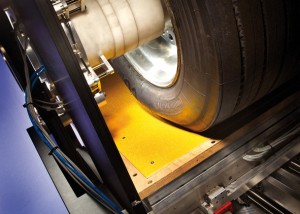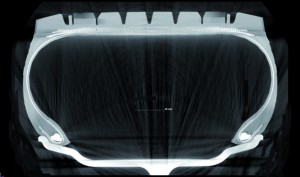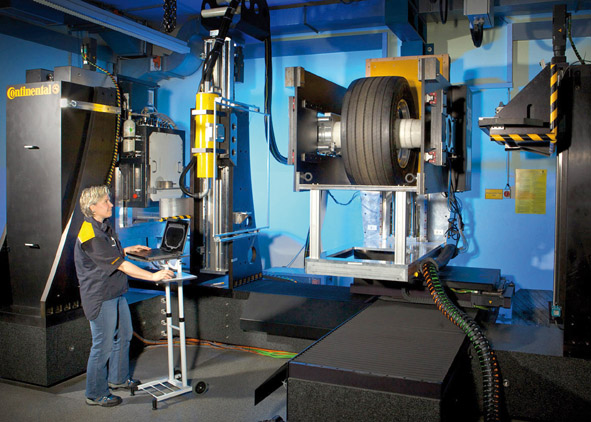Continental has put a new tyre testing facility into operation at the Research and Development Center in Hanover Stöcken, which enables quicker and more efficient scanning of passenger and commercial vehicle tyres. The existing facility has been significantly expanded for this purpose, so that now testing of the internal tyre components under driving conditions can be carried out.
“With our new CT scanning facility we can simulate driving situations such as braking, accelerating and entering curves so exactly that we can observe the internal components of a tire under the conditions which affect them most,” as André Baumgart, director of the testing center, described the new facility. “In addition, scanning can be carried out even more efficiently, so that we can test around 850 passenger and commercial vehicle tires annually.”

The facility, which has just been completed, weighs a total of about 14 tons and involved an investment of Euro 1.4 million. CT scanning procedure is most typically used in hospitals to detect diseases.
For Continental’s R&D this so-called “non-destructive analysis” is very instructive, as only this method allows observance of the behavior of the individual components under realistic conditions. Depending on the particular stress situation, the internal components of the tyre are altered, for example the steel cords in the casing change their positions relative to each other. This can affect the handling of a tyre in a positive or negative way. By simulating and observing the changes which occur in a tyre while driving, tyre developers at Continental have the opportunity to design the best possible new prototypes for the road which reflect the forces which affect them.
With the new linear electronic accumulation (LINAC) facility it is now possible to make the internal components of a tyre significantly more visible. For example, the tyre’s fit onto the rim can be precisely analyzed, or to simulate driving conditions, lateral forces of up to three tons or wheel loads of up to six tons can be created. The wheel alignment can be adjusted with an accuracy of up to 5 degrees.

“We are not testing standard situations here, though,” says Baumgart. “For us it’s also important to be able to observe the behavior of the components when exposed to too little tyre pressure or overloading of the vehicle.”
For tyre developers it is important that their products can ensure a high level of safety under conditions over and above the norm. “This new facility will make a good contribution to our safety objective,” Baumgart adds.
